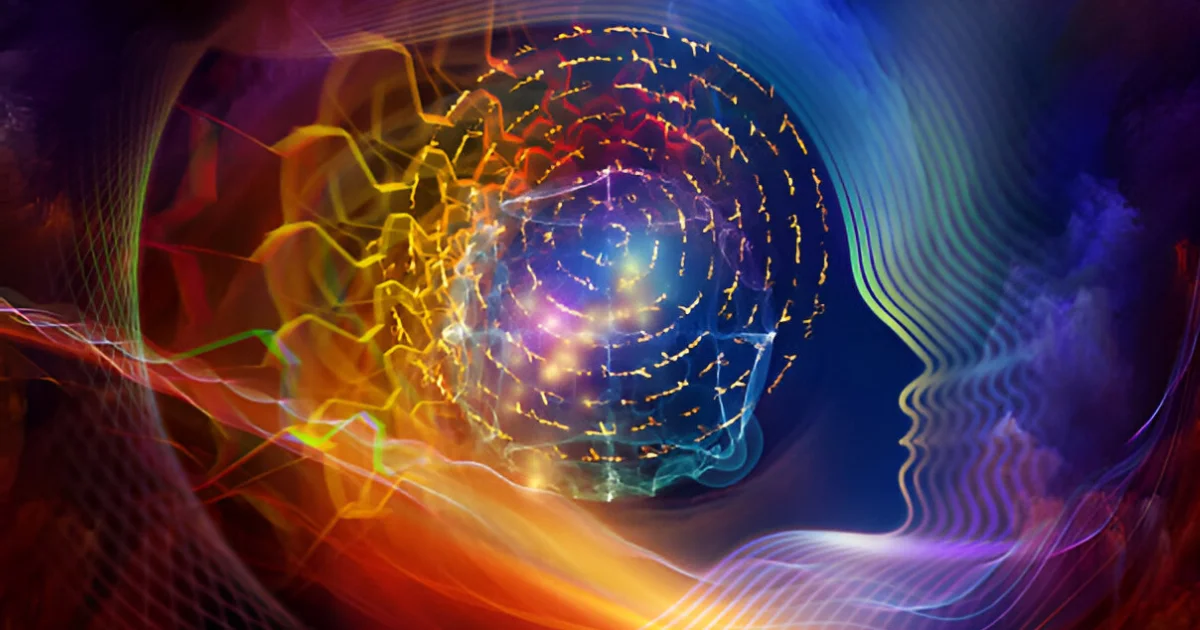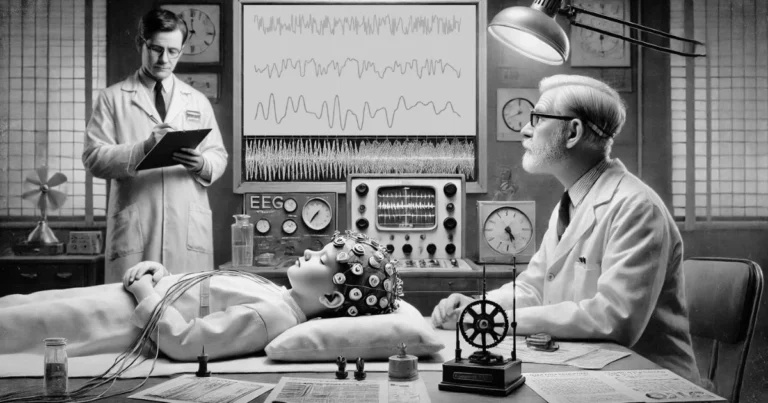Your Quantum Brain: Where Neuroscience Meets the Edge of Reality
Have you ever experienced a sudden intuition, a creative spark that seems to emerge from nowhere? That inexplicable sense of “knowing” something without being able to articulate why? These fleeting yet powerful moments often defy the mechanical explanations we’ve come to associate with brain function. What if the key to understanding the complexity of our thoughts lies not in neuronal networks, but in the strange and fascinating realm of quantum physics?
The idea of a “quantum brain” might sound like science fiction. Still, it is the subject of growing scientific interest and spirited debate. Let’s dive into this captivating universe, where neuroscience meets quantum theory.
The brain: A classical machine at the edge of mystery?
Inside the brain, billions of tiny electrical and chemical signals form a constant symphony of neural chatter. Simple reflexes, like pulling your hand away from a flame, illustrate the brain’s basic mechanics, sensory input triggers a cascade of neuronal reactions, resulting in an immediate motor response. But beyond this organized system lies a mystery: subjective experience, which continues to elude strictly mechanistic explanations.
While this classical model accurately describes basic and reflexive processes, it struggles to account for the richness of more complex mental phenomena. Take consciousness, for example, that subjective sense of self-awareness and experience of the world. How can a collection of neurons, no matter how intricate, generate such a personal and qualitative phenomenon?
The same challenge applies to intuitive decision-making, the rapid, seemingly irrational choices we make daily. Creativity, imagination, and insight, these higher-order cognitive functions often seem to transcend the capabilities of a deterministic, electrochemical neural network. Despite the incredible complexity of our brain’s interconnected neurons, it’s hard to pinpoint how such local interactions give rise to the vivid tapestry of subjective experience.
This explanatory gap is precisely what leads some scientists to explore more radical ideas, among them, the possibility that quantum phenomena may play a role in cognition. With their non-local and non-deterministic properties, quantum effects might offer new insights into the enigmatic processes behind consciousness and thought.
Think of the brain as a symphony orchestra: each neuron is a musician playing a defined part, but the final result, a harmonious symphony, is more than just a sum of its parts. While classical neuroscience describes the instruments and the score, it struggles to explain the music of subjective experience. This is where quantum physics enters the stage.
The quantum world: Superposition, entanglement, and coherence
To understand the concept of a quantum brain, it helps to grasp some core ideas from quantum mechanics. Unlike the deterministic world we experience daily, the quantum world is ruled by probabilities. A particle can exist in multiple states simultaneously, a phenomenon known as superposition. Imagine a coin that is both heads and tails at the same time, until it is observed.
Then there’s entanglement, a phenomenon where two particles become deeply linked, so that the state of one instantly influences the other, regardless of the distance between them. Finally, quantum coherence refers to the system’s ability to maintain its superposition over time.
These phenomena, as strange as they seem, underpin many modern technologies, from medical imaging to quantum computing. Could similar principles be at play within the brain? Some scientists believe so.
Orch-OR: The quantum orchestration of consciousness
One of the boldest and most debated theories in this area is the Orchestrated Objective Reduction (Orch-OR) theory, proposed by physicist Roger Penrose and anesthesiologist Stuart Hameroff. According to this hypothesis, consciousness arises from quantum processes occurring inside microtubules, tiny structural components found within neurons.
Penrose and Hameroff suggest that these microtubules function like miniature quantum computers, capable of leveraging superposition and entanglement to perform complex computations beyond the scope of classical systems. Consciousness, in their view, is not continuous but consists of discrete events, each triggered by a quantum wavefunction collapse or “objective reduction.”
To borrow the coin analogy again: in a state of superposition, the coin is both heads and tails. The wavefunction collapse is the moment the coin “decides” to be one or the other. In the Orch-OR model, each such collapse inside the brain’s microtubules generates a distinct moment of consciousness.
This theory is ambitious and has sparked both fascination and skepticism. The main challenge lies in the concept of quantum decoherence, the idea that the brain’s warm, wet environment would destroy quantum coherence too quickly for meaningful quantum processing to occur. While no definitive experimental proof exists for Orch-OR yet, research into the quantum properties of microtubules continues.
Other Models and Experimental Challenges
Beyond Orch-OR, several alternative models explore how quantum mechanics might influence the brain, though most remain speculative and contested. One intriguing area is olfaction, our sense of smell. Unlike vision or hearing, where stimuli are easily defined by wavelength or frequency, smell is more elusive. We can distinguish thousands of different odors, but the mechanism behind this remains unclear.
Biophysicist Luca Turin proposed a quantum model of smell suggesting that odor receptors detect not just the shape of a molecule, but its vibrational frequency. According to this theory, these receptors use electron tunneling, a quantum effect, to “sense” molecular vibrations, allowing for a more refined identification of odors. Though some experimental attempts have aimed to validate this idea, results so far remain inconclusive.
Other researchers have explored potential quantum phenomena in different biological processes, which could have indirect implications for brain function. Still, it’s important to note that these ideas are largely speculative and remain on the margins of mainstream neuroscience.
Proving the existence of quantum processes in the brain presents enormous experimental hurdles. Chief among them is quantum decoherence, the rapid breakdown of superposition due to environmental interference. The human brain, being warm and dynamic, is a hostile setting for maintaining quantum coherence. Any such effects would likely vanish before we could detect them.
Current technologies also fall short of the precision needed to observe quantum phenomena within a living brain. Future breakthroughs in imaging and detection tools will be necessary to distinguish genuine quantum effects from classical processes. Until then, this field remains an open frontier, rich with possibilities but awaiting scientific validation.
The quantum brain: A new vision of consciousness?
The notion of a quantum brain is undeniably bold, even revolutionary. It challenges our classical understanding of the brain and opens the door to entirely new perspectives on consciousness. Although experimental evidence is still limited, this line of inquiry is inspiring interdisciplinary collaboration among physicists, neuroscientists, and computer scientists.
The question is not whether the brain operates entirely according to quantum rules, but whether quantum processes play a role, however small, in cognitive functions. If proven true, this would reshape our understanding of consciousness, cognition, and perhaps even free will.
There’s a long road ahead. Deep research, novel experiments, and major technological advances are essential to resolving this fascinating question. But exploring the idea of a quantum brain invites us to reconsider the boundaries of knowledge, and to venture into the deepest mysteries of the human mind.
Whether this theory becomes scientific reality or remains an intriguing hypothesis, it continues to fuel one of the most exciting frontiers in science.
References
Brookes, J. C., & Kable, S. H. (2017). Molecular vibrations and the quantum model of olfaction. The Journal of Physical Chemistry A, 121(1), 213–217.
Edelman, G. M. (2003). Naturalizing consciousness. MIT press.
Hameroff, S. R., & Penrose, R. (1996). Conscious events as orchestrated spacetime selections. Journal of Consciousness Studies, 3(1), 36-53.
Koch, C. (2004). The quest for consciousness: A neurobiological approach. Roberts and Company Publishers.
Penrose, R. (1989). The emperor’s new mind: Concerning computers, minds, and the laws of physics. Oxford University Press. (Pour le contexte philosophique et physique)
Turin, L. (1996). A spectroscopic mechanism for primary olfactory reception. Chemical Senses, 21(6), 773-791.

Amine Lahhab
Television Director
Master’s Degree in Directing, École Supérieure de l’Audiovisuel (ESAV), University of Toulouse
Bachelor’s Degree in History, Hassan II University, Casablanca
DEUG in Philosophy, Hassan II University, Casablanca







